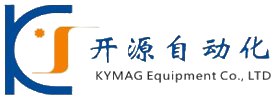Difference Between Permanent Magnet Motor And Ordinary Motor
2024-09-30
There are significant differences between permanent magnet motors and ordinary motors in multiple aspects:
1. Magnetic field properties: Permanent magnet motors can maintain their magnetic field without external energy after production, while ordinary motors require current to generate a magnetic field.
2. Rotor structure: Permanent magnet poles are installed on the rotor of a permanent magnet motor, while excitation coils are installed on the rotor of a regular motor.
3. Power density: Permanent magnet motors have high power density, small size, and high output power, with energy savings of up to 20% -40% compared to ordinary motors.
4. Efficiency and energy saving: Permanent magnet motors have higher efficiency, especially at low speeds, with significant energy-saving effects, which can improve the quality factor of the power grid and reduce reactive current.
5. Volume and weight: The permanent magnet motor has a simple structure and uses high-performance permanent magnet materials, which greatly reduces the volume and weight of the motor compared to ordinary motors, making it lighter in weight.
6. Failure rate and maintenance: Permanent magnet motors have a low failure rate and are widely used, but due to the use of permanent magnet materials, more maintenance may be required to maintain their magnetic performance.
7. Starting torque: Permanent magnet motors have a large starting torque, which can meet the requirements of high starting torque during design, and can be increased to 2.5 times or even greater.
8. Application scenarios: Permanent magnet motors are usually used in low-power applications, such as industrial automation, electric vehicles, etc; Ordinary motors, especially excitation motors, are commonly used in high-power applications such as coal mine magnetic separation.
In summary, permanent magnet motors are playing an increasingly important role in modern industry and daily life due to their high efficiency, high power density, low maintenance costs, and wide range of applications.
Recommended News







